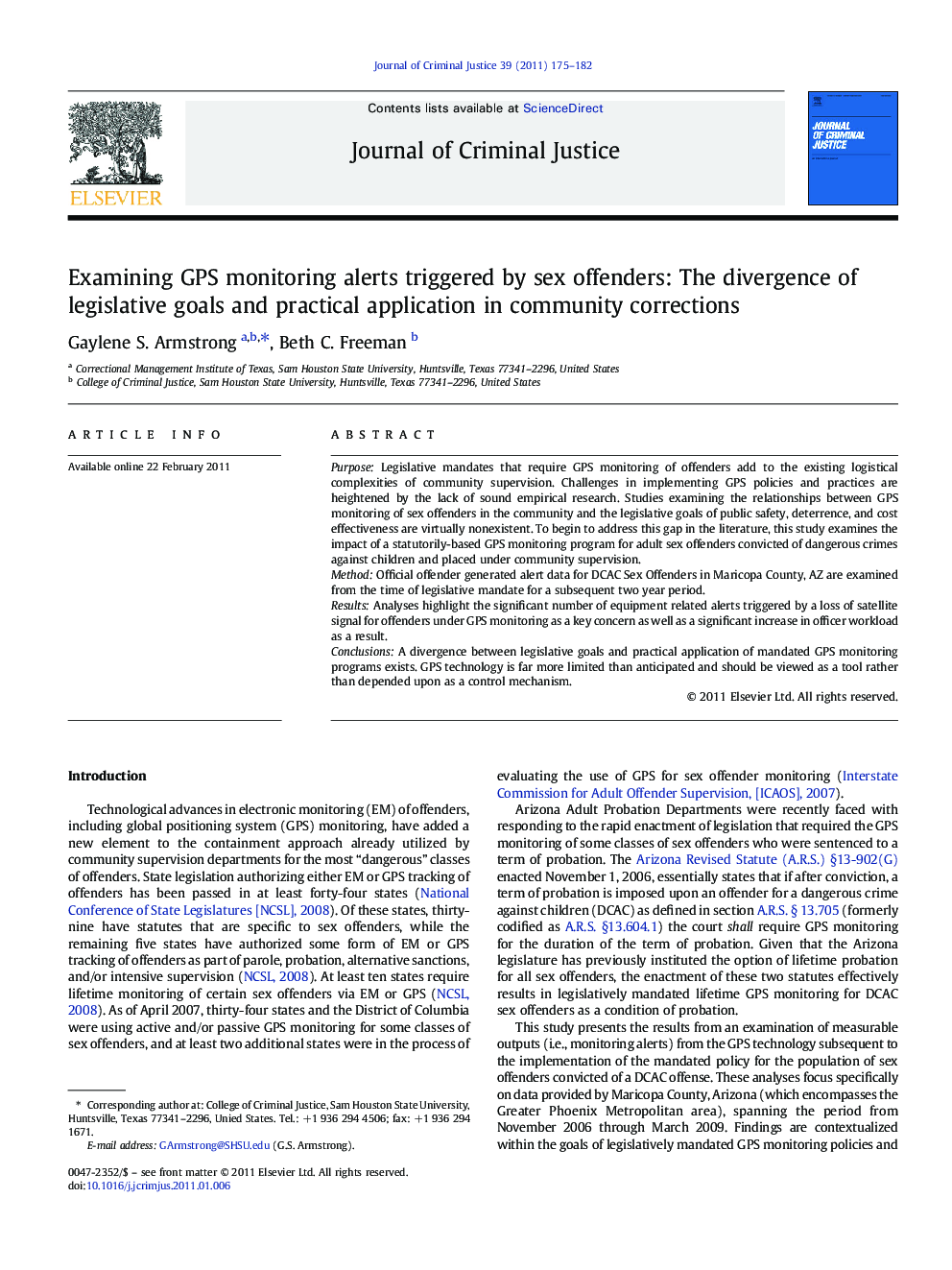| Article ID | Journal | Published Year | Pages | File Type |
|---|---|---|---|---|
| 883028 | Journal of Criminal Justice | 2011 | 8 Pages |
PurposeLegislative mandates that require GPS monitoring of offenders add to the existing logistical complexities of community supervision. Challenges in implementing GPS policies and practices are heightened by the lack of sound empirical research. Studies examining the relationships between GPS monitoring of sex offenders in the community and the legislative goals of public safety, deterrence, and cost effectiveness are virtually nonexistent. To begin to address this gap in the literature, this study examines the impact of a statutorily-based GPS monitoring program for adult sex offenders convicted of dangerous crimes against children and placed under community supervision.MethodOfficial offender generated alert data for DCAC Sex Offenders in Maricopa County, AZ are examined from the time of legislative mandate for a subsequent two year period.ResultsAnalyses highlight the significant number of equipment related alerts triggered by a loss of satellite signal for offenders under GPS monitoring as a key concern as well as a significant increase in officer workload as a result.ConclusionsA divergence between legislative goals and practical application of mandated GPS monitoring programs exists. GPS technology is far more limited than anticipated and should be viewed as a tool rather than depended upon as a control mechanism.
Research Highlights► GPS legislation assumes monitoring controls high risk offender movements. ► A high number of offender “alerts” or “triggers” result from GPS equipment limitations. ► Most GPS monitored sex offenders do not enter “restricted” zones when wearing monitoring equipment ► Offender absconding though equipment removal cannot be entirely controlled.
